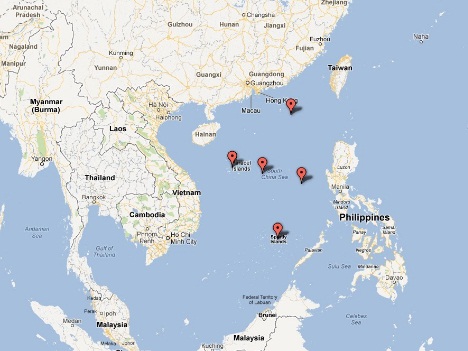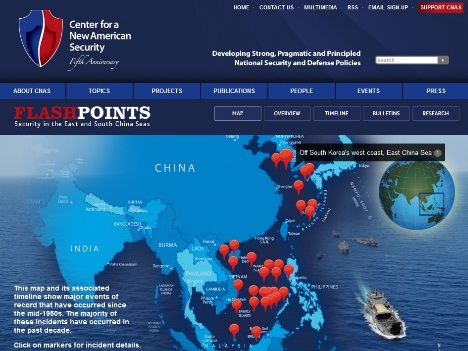'South China' or 'West America' Sea?
4 Jul 2012
Much like Northeast Asia, balance of power dynamics are central to the security and foreign policies of Southeast Asian nations, and the region is also dominated by the interests of global actors. As we have seen this week, China’s growing economic and geopolitical influence across Southeast Asia has become a source of geopolitical anxiety for the US. Meanwhile, the increasing strength of ASEAN – both among its members and in its diplomatic initiatives – suggests that an indigenous ‘third way’ to solve the region’s security issues is at least viable. Today, however, we look at the most salient feature of geopolitical confrontation in Southeast Asia – the maritime disputes of the South China Sea. For more information about the various disputes between China and a host of Southeast Asian states, see the map below:
Maritime Disputes in the South China Sea
For further research into these issues, we recommend an interactive multimedia project – external pageFlashpoints: Security in the East and South China Seascall_made – from our partners at the Center for a New American Security (CNAS). The Flashpoints project makes available major new reports and other relevant research on the security of the South and East China Seas. Periodic bulletins highlight individual issues and add new information for Flashpoints users. A map and timeline of major incidents depicts and catalogues dozens of events of record that have occurred since the mid-1950s.
Flashpoints, which is underwritten in large part by the Smith Richardson Foundation, is a project within the Asia-Pacific Security Program of CNAS.
external pagecall_madeFurther Resources:
- Stirring Up the South China Sea, report by the International Crisis Group
- external page'Hostility' Fears Over South China Sea Disputed Waterscall_made, video by BBC News
- external pageThe South China Seacall_made, website on development, environment and security issues by Prof David Rosenberg
- external pageChina and Philippines Dispute South China Seacall_made, video by STRATFOR
- external pageThe South China Sea: Troubled Waterscall_made, video by the US-China Institute
- external pageQ&A: South China Sea Disputecall_made, article by BBC News



